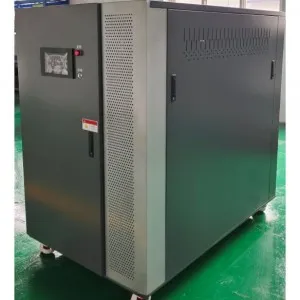دېكابىر . 20, 2024 18:53 Back to list
Compact Design for Efficient Heat Exchange in Small-Scale Applications
Small-Scale Heat Exchangers An Overview
Heat exchangers play a critical role in a myriad of industrial processes, with small-scale heat exchangers being particularly essential for many applications. These devices allow for efficient thermal energy transfer between two or more fluids at different temperatures, making them indispensable in heating, cooling, and energy recovery systems. This article aims to explore the significance, types, applications, and advantages of small-scale heat exchangers.
Importance of Small-Scale Heat Exchangers
Small-scale heat exchangers are designed to facilitate energy exchange in confined spaces, often with limited flow rates. Their importance cannot be overstated; they enable improved energy efficiency and system performance while minimizing space and weight. Industries ranging from HVAC (Heating, Ventilation, and Air Conditioning) to automotive and electronics rely on these compact systems to enhance their thermal management processes.
Types of Small-Scale Heat Exchangers
Several configurations of small-scale heat exchangers exist, each suited for specific applications. The most common types include
1. Plate Heat Exchangers These consist of multiple thin plates stacked together, creating a large surface area for heat transfer. They are compact and offer high efficiency, making them ideal for processes that require significant heat transfer in limited space.
2. Shell and Tube Heat Exchangers This design features a series of tubes enclosed within a cylindrical shell. One fluid flows through the tubes while another fluid flows around them. Though more extensive than plate exchangers, they are highly effective for larger applications where greater thermal loads are present.
3. Finned Tube Heat Exchangers Fins are added to tubes to enhance the surface area for heat transfer, making this design suitable for air cooling applications. Finned designs are often seen in radiators and condensers.
4. Air-Cooled Exchangers Utilizing ambient air to dissipate heat, these exchangers are ideal when water resources are scarce. They are commonly used in power plants and refineries to improve thermal efficiency.
Applications of Small-Scale Heat Exchangers
The versatility of small-scale heat exchangers enables their application across various sectors, including
small scale heat exchanger

- HVAC Systems Heat exchangers are pivotal in systems that emphasize maintaining comfortable indoor environments by transferring heat between indoor and outdoor air
.- Chemical and Process Industries Small-scale heat exchangers are employed in reactors and distillation columns to regulate temperatures and improve reaction efficiencies.
- Renewable Energy In solar thermal systems, heat exchangers enable the transfer of heat from solar collectors to water or other fluids for heating purposes.
- Food Processing These devices are essential for pasteurization processes and maintaining required temperatures that ensure food safety and quality.
Advantages of Small-Scale Heat Exchangers
The adoption of small-scale heat exchangers comes with a plethora of benefits
- Compact Design Their small footprint means they can fit into tighter spaces, which is essential in modern machinery and facilities where space is a premium.
- Energy Efficiency By facilitating effective heat transfer, these exchangers reduce energy consumption and operational costs, contributing to a more sustainable environment.
- Cost-Effective Solutions Their design allows manufacturers to minimize material usage without compromising performance, leading to more affordable products.
- Ease of Maintenance Many small-scale heat exchangers are easier to clean and maintain, which reduces downtime during routine servicing and enhances overall operational efficiency.
Conclusion
In conclusion, small-scale heat exchangers are indispensable components in a wide array of sectors, promoting energy efficiency, sustainability, and system optimization. As technology advances, the efficiency and applicability of these devices continue to improve, opening avenues for innovation in heat transfer solutions. Their role in modern thermal management systems solidifies their significance, reinforcing our capability to harness and utilize thermal energy effectively.
-
Durable Centrifugally Cast Iron Water Main Pipe
NewsAug.11,2025
-
Centrifugally Cast Iron Water Main Pipes for Reliability
NewsAug.10,2025
-
High-Quality Centrifugally Cast Iron Water Main Pipes
NewsAug.09,2025
-
Durable Cast Iron Water Main Pipe & Drainage Solutions
NewsAug.08,2025
-
Buy Cast Iron Pipe: Premium Ductile Iron & Drain Solutions
NewsAug.07,2025
-
Durable Cast Iron Water Main Pipe | Buy Ductile Pipe
NewsAug.06,2025


